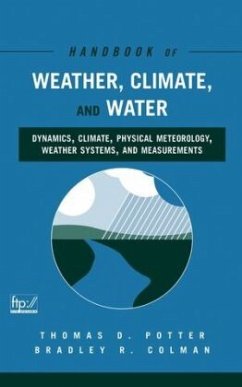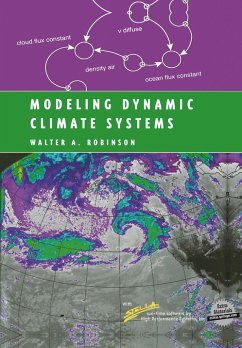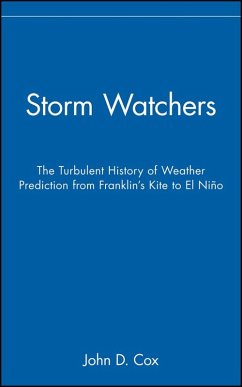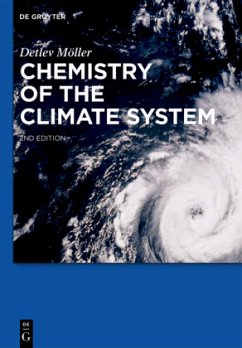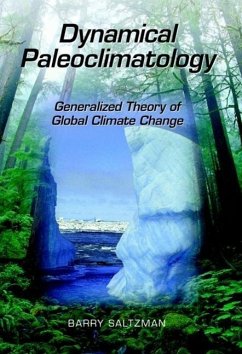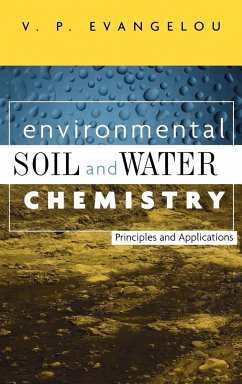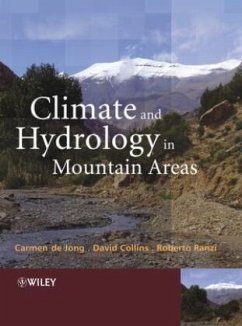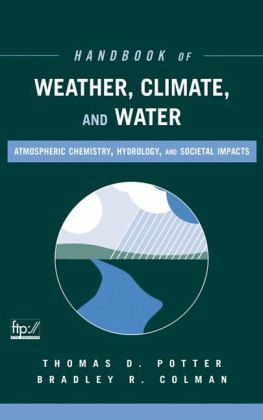
Handbook of Weather, Climate, and Water
Atmospheric Chemistry, Hydrology, and Societal Impacts
Ed. by Thomas D. Potter and Bradley R. Colman
Versandkostenfrei!
Versandfertig in über 4 Wochen
267,99 €
inkl. MwSt.

PAYBACK Punkte
134 °P sammeln!
The Handbook of Weather, Climate, and Water: Atmospheric Chemistry, Hydrology, and Societal Impacts is the first of two stand-alone volumes that will be landmarks in the meteorological literature for many years to come. Each volume encompasses both fundamental topics and critical issues that have recently surfaced in studies of the hydrosphere and atmosphere. Renowned experts have contributed to every part of this handbook. Each overview chapter is followed by topic-specific chapters written by specialists who present comprehensive discussions at a greater level of detail and complexity.The Ha...
The Handbook of Weather, Climate, and Water: Atmospheric Chemistry, Hydrology, and Societal Impacts is the first of two stand-alone volumes that will be landmarks in the meteorological literature for many years to come. Each volume encompasses both fundamental topics and critical issues that have recently surfaced in studies of the hydrosphere and atmosphere. Renowned experts have contributed to every part of this handbook. Each overview chapter is followed by topic-specific chapters written by specialists who present comprehensive discussions at a greater level of detail and complexity.
The Handbook of Weather, Climate, and Water: Atmospheric Chemistry, Hydrology, and Societal Impacts covers topics that are essential for grasping the scientific bases of major issues such as global climate warming, the ozone hole, acid rain, floods, droughts, and other natural disasters. Cross-references between chapters allow readers to easily pursue a specific interest beyond a particular subtopic or individual chapter. Other topics include:
-Aerosols and smog
-Cloud chemistry
-Greenhouse gases
-Remote sensing techniques in hydrology
-Hydrologic forecasting and simulation
-Tropical deforestation effects on the climate system
-Societal impacts of the El Niñ;o phenomenon
The Handbook of Weather, Climate, and Water: Atmospheric Chemistry, Hydrology, and Societal Impacts will be an essential addition to the libraries of professionals and academics in the environmental sciences, and a valuable source book for university and technical libraries throughout the world.
The Handbook of Weather, Climate, and Water: Atmospheric Chemistry, Hydrology, and Societal Impacts covers topics that are essential for grasping the scientific bases of major issues such as global climate warming, the ozone hole, acid rain, floods, droughts, and other natural disasters. Cross-references between chapters allow readers to easily pursue a specific interest beyond a particular subtopic or individual chapter. Other topics include:
-Aerosols and smog
-Cloud chemistry
-Greenhouse gases
-Remote sensing techniques in hydrology
-Hydrologic forecasting and simulation
-Tropical deforestation effects on the climate system
-Societal impacts of the El Niñ;o phenomenon
The Handbook of Weather, Climate, and Water: Atmospheric Chemistry, Hydrology, and Societal Impacts will be an essential addition to the libraries of professionals and academics in the environmental sciences, and a valuable source book for university and technical libraries throughout the world.



